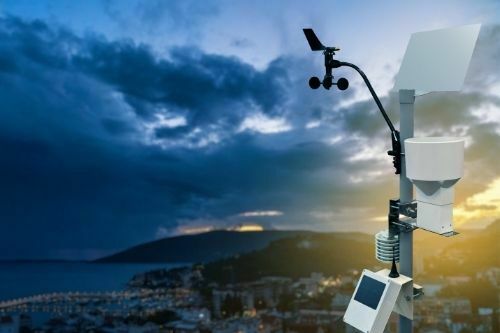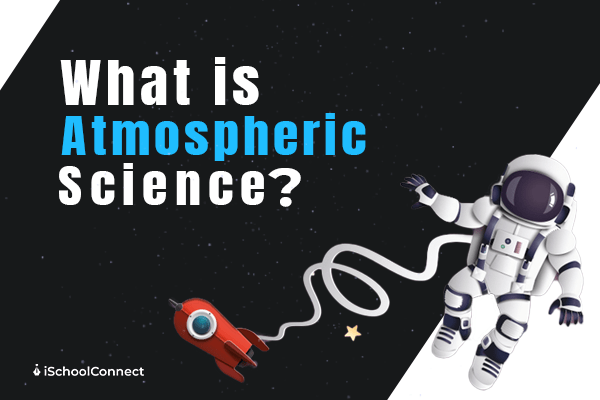Table of Contents
Atmospheric Science is a study of weather analysis & forecast, climate & global change. It also covers other areas such as:
- The circulation of the atmosphere linked to weather systems
- And their influence on the Earth, air quality, and other atmospheric phenomena that affect humanity.
The knowledge of atmospheric science is critical to our resiliency and readiness to address the most significant crisis confronting our atmosphere-dependent systems.
Below are the main areas of atmospheric science:
Meteorology and Atmospheric Dynamics: The study of air motions that lead to thunderstorms, frontal systems, hurricanes, and tornadoes.
Climatology: Climatology is the study of median meteorological conditions over a period of time. The term “climate” refers to a composite weather report for a given period. Climatology is a subfield of physical geography and a subject of atmospheric science.
Paleotempestology: Paleotempestology is the study of ancient tropical cyclone activity via the use of a variety of geological proxies and historical sources.
Paleoclimatology: The study of ancient climate changes is known as paleoclimatology. Because traveling back in time to see climatic changes is difficult, scientists interpret the paleoclimate using a variety of climate imprints generated in the past, known as proxies.
Atmospheric Physics: Atmospheric Physics is the study of atmospheric phenomena such as cloud formation, light scattering, and energy transmission using physics concepts.
Atmospheric Chemistry: Atmospheric chemistry is the study of atmospheric processes such as pollution, ozone depletion, and aerosol generation using chemistry concepts.
Climate Science studies: Climate science investigates variations in weather data over timescales ranging from seasons to millennia and beyond, including El Niño, global warming, and ice ages.
Undergraduate Programs in Atmospheric Sciences

Bachelor’s Degree in Meteorology
Students who complete an undergraduate course of study in Atmospheric Sciences receive the degree of Bachelor of Science in Meteorology. The study of physics is combined with an introduction to meteorology in this curriculum. You’ll learn about atmospheric dynamics and the tools used to investigate them, as well as a solid foundation in physics.
- Atmospheric physics
- Atmospheric dynamics
- The physics of climate
Minor in Meteorology
You will get meteorological experience both inside and outside the classroom as part of this curriculum. The purpose of this program is to use general scientific concepts to conduct systematic research of earth-atmosphere systems and to teach and train students evaluate these systems on a range of geographical and temporal scales utilizing technologies such as:
- Satellites
- Radar
- Automated weather observations
- Numerical weather prediction
Graduate Programs in Atmospheric Sciences

Atmospheric Sciences Msc
This program comprises basic atmospheric science research conducted both independently and in collaboration with federal and provincial laboratories as well as other research organizations throughout the world. The research focuses on process studies and the development of physical knowledge of the atmosphere. Measurement and observation in the field or the lab, data analysis and interpretation, numerical model building, modification, and validation are all typical aspects of the research.
There are two M.S. degree tracks available:
The Research-based Track: Students in the research track complete an original M.S. thesis based on independent research. 32 credit hours of coursework are also required, of which 23 hours must be formal (i.e., non-research based) coursework.
The Non-Thesis Option: The research-based track is chosen by the majority of M.S. applicants, although there is also a non-thesis option. The non-thesis M.S. requires a minimum of 36 hours of study. Non-thesis students must also pass a thorough test in place of the thesis defense.
The majority of students earn their M.S. degree in two to three years after enrolling in the program.
Ph.D. Atmospheric Sciences
The Ph.D. in Atmospheric Sciences prepares students for careers as university professors as well as independent research jobs in academic institutions, government agencies, and the commercial sector.
The Ph.D. program requires 32 hours of formal coursework, as well as research hours toward the completion of a doctorate dissertation. The following minimal distribution requirements must be met while selecting courses:
Most students take additional courses to the required minimum, which they choose with their advisor. A qualifying test, a research-based preliminary exam, and the final dissertation defense are all required of Ph.D. applicants.
Program Curriculum (Atmospheric Science topics)
- Fundamentals of Atmospheric Dynamics
- Atmospheric Physics I
- Quantitative Methods for the Atmospheric Sciences
- General Circulation and Climate
- Chemistry I in Atmospheric
- Atmospheric Dynamics II
- Atmospheric Physics II
- Advanced Atmospheric Chemistry
- Numerical Methods for the Geosciences
- Climate Change
- Climate Modeling
- Statistical Methods in Climate Research
- Dynamic Meteorology
- Dynamics of Convective Clouds
- Cloud and Precipitation Physics
- Dynamics of Ocean-Atmosphere Interaction
- Satellite Data in Meteorology
- Tropical Meteorology
- Meso Meteorology
- Synoptic Meteorology
- Tropical Cyclones
- Atmospheric Turbulence
- Laboratory Methods in Atmospheric and Environmental Sciences
- Geophysical Data Assimilation
- Seminar
- Directed Studies
- Special Topics in Meteorology
- Research
Below is the list of the best Atmospheric Science universities
- University of Washington – Seattle
- California Institute of Technology
- Massachusetts Institute of Technology
- Colorado State University-Fort Collins
- University of Reading
- University of Colorado Boulder
- Maryland University- College Park
- Pennsylvania State University
- Princeton University
- University of Wisconsin – Madison
Careers in Atmospheric Science
In the field of atmospheric science, there are several career options. Find below the atmospheric science jobs.
- Atmospheric scientists
- Economic geologists
- Engineering geologists
- Environmental geologists
- Geoanthropologists
- Geochemists
- Geochronologists
- Geologists
- Geomorphologists
- Geophysicists
- Glacial geologists
- Hydrogeologists
- Hydrologists
- Marine geologists
- Meteorologists
- Mineralogists
- Oceanographers
- Paleoecologists
- Paleontologists
- Petroleum geologists
- Petrologists
- Planetary geologists
- Sedimentologists
- Seismologists
- Soil scientists
- Stratigraphers
- Structural geologists
- Volcanologists
Takeaways
Atmospheric sciences courses involve the study of the environment, its processes, the effect of other ecosystems on the atmosphere, and the consequences of the atmosphere on these other systems.
The Atmospheric Sciences are divided into three topical areas such as:
- Meteorology (the study and forecasting of weather),
- Climatology (the study of long-term atmospheric patterns and their influences).
- Aeronomy (the study of the physics and chemistry of the upper atmosphere).
Advances in Atmospheric Sciences Contribute to Social Well-Being: The atmospheric sciences are responsible for improving basic knowledge, forecasting weather and climate change, and identifying environmental hazards.
FAQs
What’s the difference between meteorology and atmospheric science?
The study of the Earth’s atmosphere and its different inner-working physical processes is known as atmospheric science. Meteorology is the science of the atmosphere’s chemistry and physics, with a concentration on weather forecasting.
Is atmospheric science the same as environmental science?
Not really, Environmental science is concerned with the study of nature and our surroundings, whereas atmospheric research is concerned with the atmosphere and its impacts.
What is the average time taken to become an atmospheric scientist?
A full-time student can complete an Atmospheric Sciences & Meteorology program in one to four years.






